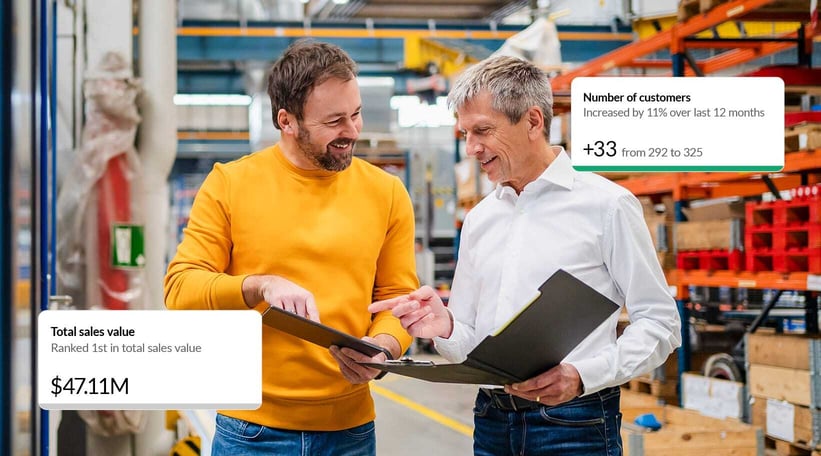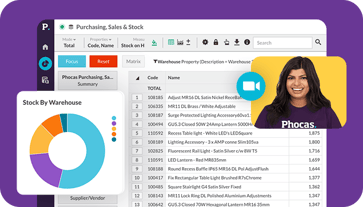The untapped benefits of customer segmentation
Customer segmentation has been around for decades, but in many organizations, it’s still underutilized. Done right, it’s one of the most powerful tools to help sales teams focus their time and energy, optimize resources and improve the customer experience.
We recently asked our customers, ‘How confident are you that your customer segmentation drives better sales outcomes?' The results showed us that business people know segmentation is useful but few have a reliable or fast way of doing it.
25% are very confident and can measure segmentation ROI weekly. 63% are confident it improves outcomes and 13% are not confident and are unsure if segmentation is used at all.
When we asked the same group what types of customer segmentation methods they use, here’s what they told us. None of them have an automated customer segmentation model with rules and a regular data feed, and 10% said they are not using segmentation to help their marketing efforts. But we were pleased to learn that nearly half (48%) advised they do basic demographic segmentation or geographic grouping, while a quarter carry out behavioural segmentation based on buying patterns – but most do it manually.
Despite the clear belief that segmentation works, no one in our poll is using a sophisticated, automated model. And that’s where the opportunity lies.
The cost of poor segmentation
According to McKinsey & Company research, sales reps spend just 33% of their work week actively selling. The other 67% is taken up by administrative tasks like lead qualification, opportunity management, price quoting and CRM updates.
And also worrying is that underperforming B2B sales teams spend more than half their time serving customers who contribute only 20% (or less) of company revenues. That’s not good for the business, your customer relationships or profitability.
There are two big issues here that plague every sales team – time and focus. The art of successful selling and also keeping your people motivated is ensuring sales reps have enough hours for selling and also making sure those hours are spent with target customers most likely to buy.
Customer segmentation directly addresses both. With a clear, accurate view of your customer base, you can prioritize resources toward specific groups and avoid wasting time on low-value accounts.
Signs it’s time to rethink your segmentation
If you’re wondering whether you need to introduce segmentation or revisit your approach here are some warning signs we've helped customer address.
-
It’s not immediately obvious who your loyal customers are
-
Your sales teams are unclear where to focus their marketing efforts
-
Sales are stagnating or declining without a clear cause
-
You struggle to understand customer needs across different customer segments
-
Customer retention is falling and you don’t know why
-
You’re launching new products but unsure if you’re targeting the right audience
If even one of these signs sounds familiar, it’s worth reassessing how your customer data is being used.
Why behavioural segmentation delivers more value
Basic demographic or geographic segmentation such as grouping customers by industry, location or marital status is the first step. Behavorial segmentation goes deeper, grouping customers based on how they interact with your business via how often they buy, how much they spend and how recently they’ve purchased.
One of the most effective methods is the Recency Frequency Monetary (RFM) analysis model. The RFM segmentation process was developed by Jan Roelf and Tom Wansbeek in the 1990s. The key metrics are
-
Recency: How recently a customer made a purchase. A recent purchase indicates higher customer engagement.
-
Frequency: How often they buy. Higher frequency suggests brand loyalty.
-
Monetary value: How much they spend. Higher monetary value indicates greater lifetime value.
RFM helps you spot important patterns quickly. For example:
-
A loyal customer who hasn’t purchased in six months? That’s a churn risk worth re-engaging immediately.
-
A low-spend customer who buys infrequently when other suppliers are out of stock? Probably not a specific customer where you want to spend lots of time.
Phocas Insights
At Phocas, we studied how much time sales and marketing teams were wasting on manual segmentation processes. That’s why we designed Insights, an RFM-based customer segmentation tool built to connect to Phocas Analytics. Customers need to nominate the typical parameters within their companies for when customers buy and the frequency that aligns with their business norms.
Insights then uses your customer data in Phocas Analytics to group customers into 10 segments like ‘champions’ at the top or ‘at-risk’ at the bottom. It helps manufacturers, wholesalers and retailers focus on accounts with the highest potential return and clearly summarizes all customers and that qualify in each segment.
Insights is designed to help increase revenue through identifying high-value customers and offer product recommendations that meet unique needs. You can also reduce churn by spotting early warning signs of disengagement and intervene before it’s too late. And the value everyone wants is the structure and certainty it brings to your customer base. It is great feeling to know what groups of customers want products.
The biggest barrier to better segmentation isn’t belief. Our poll showed people already trust its value. The barrier is execution speed. Businesses simply can’t afford to spend days building buyer personas manually, especially when customer behaviors change rapidly.
Automation solves that problem. Segmentation frees your sales teams to focus on what they do best – which is building relationships, closing deals and driving revenue.
When every rep knows exactly which specific customers to call, when to call them and what to offer with accurate data, they become more confident and feel like a trusted advisor.


Katrina is a professional writer with a decade of experience in business and tech. She explains how data can work for business people and finance teams without all the tech jargon.
Related blog posts

Picture a football coach preparing for the big game. He watches game‑tape, studying player metrics, analyzing every play and using real‑time stats to inform strategy. That’s exactly how sales managers and sales leaders should approach their coaching program—with a data‑driven approach.
Read more
Sales professionals operate in face-paced environments with savvy customers who have a lot of choice. Whether you're in B2B sales or working with consumers, the sales process is challenging with longer sales cycles, more decision-makers and higher expectations for follow-up and advice. To stay competitive, sales reps and sales teams need the best sales tools to reduce administrative tasks and improve sales team performance.
Read more
“Free BI tools trial, business analytics software for free, free BI reporting with AI-powered insights”– these offers are tempting business people all the time especially as new open-source players enter the market and want cut-through.
Read moreBrowse by category

Find out how our platform gives you the visibility you need to get more done.
Get your demo today